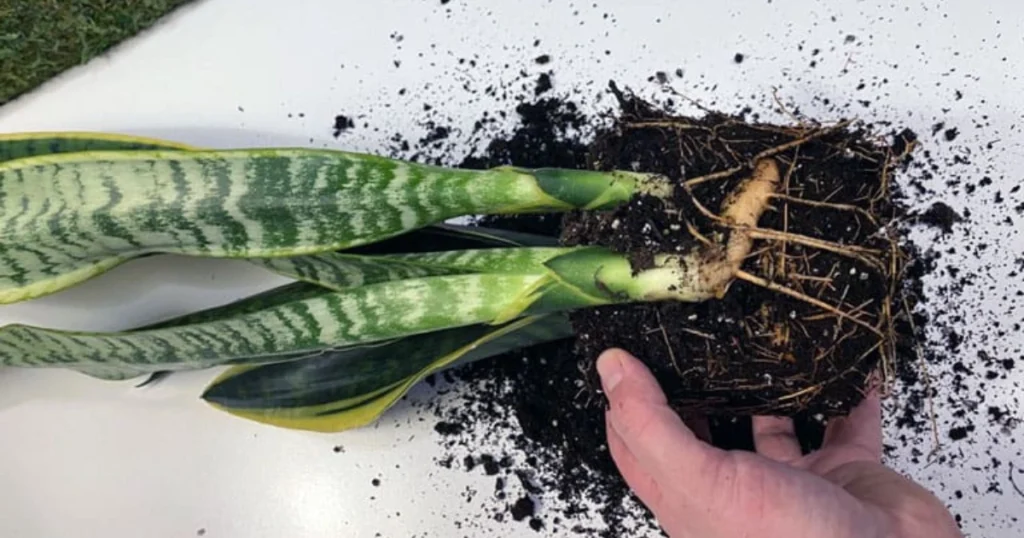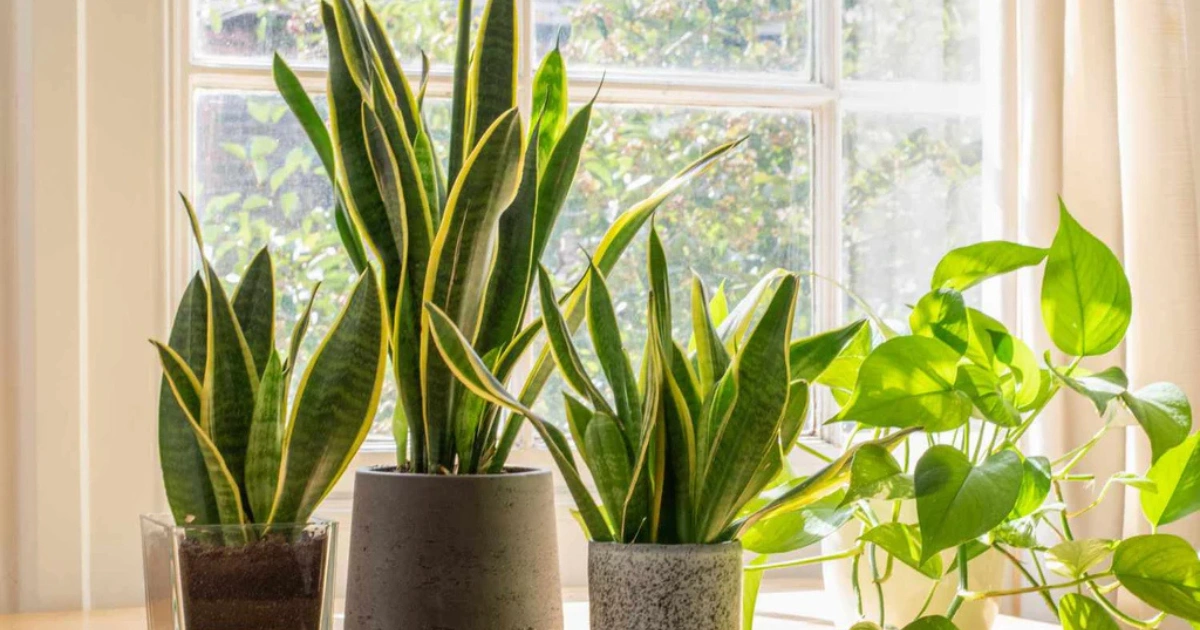Snake plants (Sansevieria or Dracaena trifasciata) are some of the easiest houseplants to grow, but many owners dream of seeing them produce “pups” — the small offshoots that pop up around the base of the mother plant. These pups not only make your plant look fuller but can also be separated and repotted to grow entirely new plants.
If your snake plant has been stubbornly growing as a single cluster, don’t worry. By understanding how these plants naturally propagate and making a few strategic adjustments, you can encourage your plant to produce pups more quickly and in greater numbers.
This guide walks you through everything: from how snake plants form pups, to the right pot size, watering habits, and other tricks that push your plant to reproduce. We’ll also cover troubleshooting common issues, seasonal tips, and how to divide pups correctly. Whether you’re growing indoors or outdoors, you’ll be able to multiply your plant family with ease.

Why Snake Plants Produce Pups: Understanding the Basics
Snake plants spread via underground rhizomes—horizontal stems that store energy and produce new shoots. These rhizomes grow outward beneath the soil and eventually send up pups, which become independent plants.
The mother plant allocates energy to rhizome growth when conditions are right: slightly crowded roots, ample light, and balanced water. If the plant feels too comfortable or is under stress, pup production slows down. Your goal is to create an environment that nudges the plant into multiplying.
Step-by-Step Guide: How to Encourage Pups
1. Select the Right Pot Size
Snake plants actually prefer snug pots. When roots feel slightly crowded, the plant pushes out rhizomes to find new space, which leads to pups. Too much room discourages reproduction because the plant focuses on root and leaf growth instead.
- Use a pot just one size larger than the root ball.
- If your plant has been in a large container with no new growth, repot it into a smaller, more restrictive space.
- Terra cotta pots are ideal because they allow air to flow and help avoid waterlogged soil.
2. Optimize Lighting
Snake plants survive in low light, but bright, indirect light is what stimulates pups. In nature, they grow in open, sunny areas, so try to mimic those conditions at home.
- Place the plant near a south- or west-facing window where it gets 6–8 hours of filtered light.
- Avoid harsh direct sun, which can scorch leaves.
- If natural light is limited, use a full-spectrum grow light. Even a few hours daily can boost growth.
Pro tip: Snake plants in bright locations typically produce pups much faster than those in dim corners.
3. Water Strategically
Overwatering is a common reason snake plants stop producing pups. Rhizomes thrive in soil that dries out completely between waterings.
- Wait until the soil is dry to the touch before watering again.
- Water deeply, then allow excess to drain completely.
- In most climates, this means watering every 2–3 weeks during the growing season.
- Avoid letting the plant sit in water, which leads to root and rhizome rot.
Underwatering can also slow pup growth, so find the right balance. Check the firmness of the leaves—if they start to wrinkle or feel soft, it’s time to water.
4. Maintain Ideal Temperatures
Snake plants grow fastest when temperatures are consistently warm.
- Aim for 70–85°F (21–29°C) during the day.
- Growth slows dramatically below 50°F (10°C).
- If you live in a colder climate, move the plant away from drafty windows in winter.
Seasonal changes can also trigger pups. In early spring, increase light and water slightly to signal the start of a new growth cycle.
5. Feed Lightly During the Growing Season
Fertilizer provides energy for pup development, but too much can cause the plant to focus solely on leaves.
- Use a balanced, all-purpose liquid fertilizer diluted to half strength.
- Apply every 4–6 weeks in spring and summer only.
- Do not fertilize in winter when the plant is dormant.
Too much fertilizer can burn roots and slow pup formation. Less is more.
6. Divide Existing Pups to Stimulate More Growth
If your snake plant already has pups, removing and replanting them encourages the mother plant to produce more.
- Wait until a pup has at least three leaves and a small root system.
- Remove the plant from the pot and locate the rhizome connecting the pup to the mother.
- Use a clean, sharp knife or pruning shears to cut it free.
- Allow the cut end to callus for a few hours before repotting in fresh soil.
Separating pups also prevents overcrowding, which can stall future rhizome growth.
Common Mistakes to Avoid
1. Using a pot that is too large
Large pots keep soil wet longer, which snake plants dislike. Crowded roots are better for pups.
2. Keeping the soil constantly damp
Moisturelogged soil causes root and rhizome rot. Always let the soil dry completely between waterings.
3. Placing in low-light areas
Low light may keep the plant alive, but it won’t produce new shoots readily. Bright indirect light is key.
4. Overfertilizing
Heavy feeding produces tall leaves, not pups. Stick to diluted fertilizer and use sparingly.
5. Ignoring temperature
Cold or fluctuating temperatures stress the plant and slow growth. Keep it in a stable, warm location.
Seasonal and Regional Tips
Spring and Summer: These are the main growing seasons. Increase watering frequency slightly and feed with diluted fertilizer. Move the plant to the brightest spot available.
Fall: Gradually reduce water and stop fertilizing. Allow the plant to slow down naturally.
Winter: Snake plants become dormant in cold months. Keep them warm and water only once every 4–6 weeks or when soil is completely dry.
Tropical regions: Plants may grow year-round outdoors. Ensure they’re shaded during intense midday sun.
Arid climates: Terra cotta pots and well-draining soil are even more crucial. Watch for faster drying times.
Benefits of Snake Plant Pups
- Natural propagation: Each pup can be separated to grow a brand-new plant.
- Fuller appearance: Pups fill out the pot and make the plant look lush.
- Air-purifying benefits: More plants mean more air filtration in your home.
- Cost savings: You can expand your collection or gift plants without spending extra.
- Satisfaction: Watching your plant reproduce is rewarding and a sign of healthy care.
Tools and Materials Checklist 🧰
🌱 Healthy mother snake plant
🪴 Small, well-draining pot (preferably terra cotta)
🪱 High-quality succulent or cactus soil
✂️ Clean, sharp pruning shears or knife
💧 Watering can with a narrow spout
☀️ Bright window or grow light
🧼 Disinfectant for cleaning tools
Frequently Asked Questions
How long does it take for a snake plant to produce pups?
Under ideal conditions, pups may appear within 3–6 months. In less optimal settings, it can take over a year.
Do I need to remove pups from the mother plant?
Not necessarily. If you prefer a fuller pot, leave them attached. Remove only if you want to propagate new plants.
Can snake plants grow pups in low light?
They might, but much more slowly. Bright indirect light speeds up rhizome growth significantly.
What type of soil is best for snake plants?
A well-draining succulent or cactus mix prevents soggy roots. Adding perlite or sand improves drainage further.
Why is my snake plant healthy but not producing pups?
It may be too comfortable. Try repotting into a smaller container or moving it to a brighter location to encourage rhizome activity.
Can I propagate snake plants by leaf cuttings instead?
Yes, but pups from rhizomes grow faster and produce more robust plants than leaf cuttings.
Conclusion: Multiply Your Plant Collection Naturally
Snake plants are low-maintenance houseplants that reward the right care with new pups. By giving them a snug pot, plenty of light, careful watering, and seasonal attention, you can trigger rhizomes to produce offshoots regularly. Each pup can either stay with the mother for a fuller look or be separated to start its own pot.
Have you successfully multiplied your snake plants? Share your tips and experiences in the comments! And if you’re looking for more ways to level up your indoor gardening, explore other guides on plant propagation, container planting, and sustainable soil care from Secrets of the Green Garden.


https://t.me/s/iGaming_live/4864
https://t.me/officials_pokerdom/3624
https://t.me/s/Fresh_officials